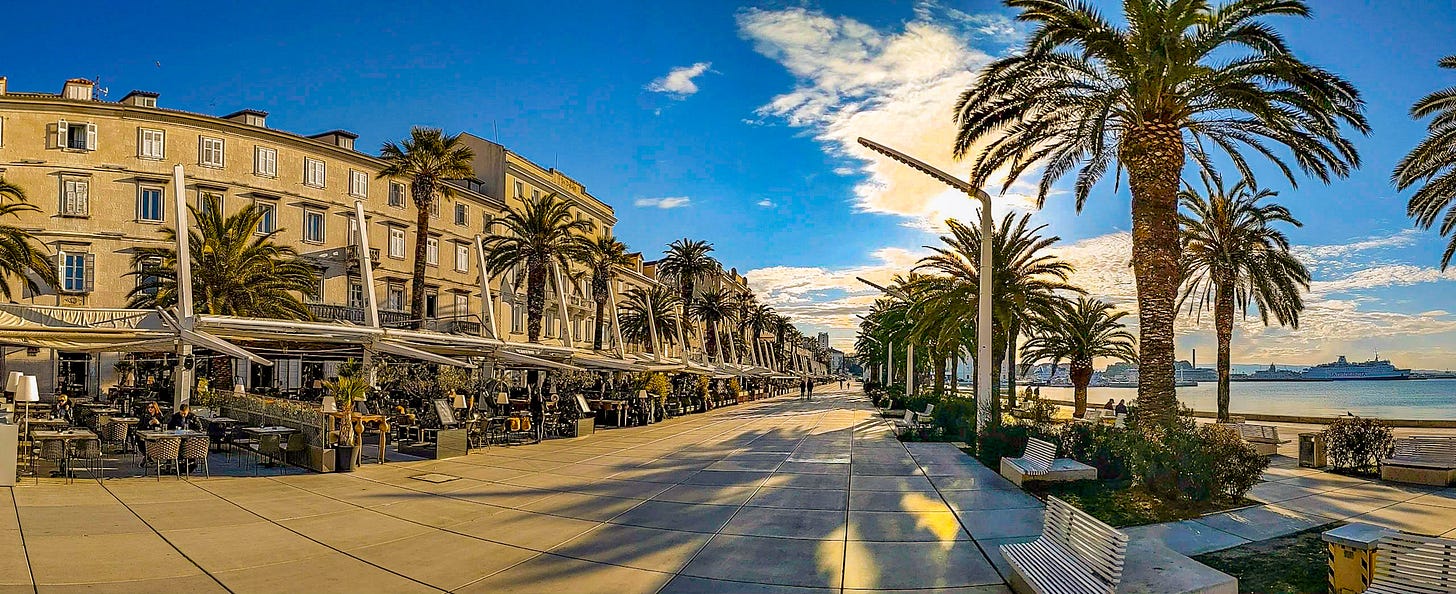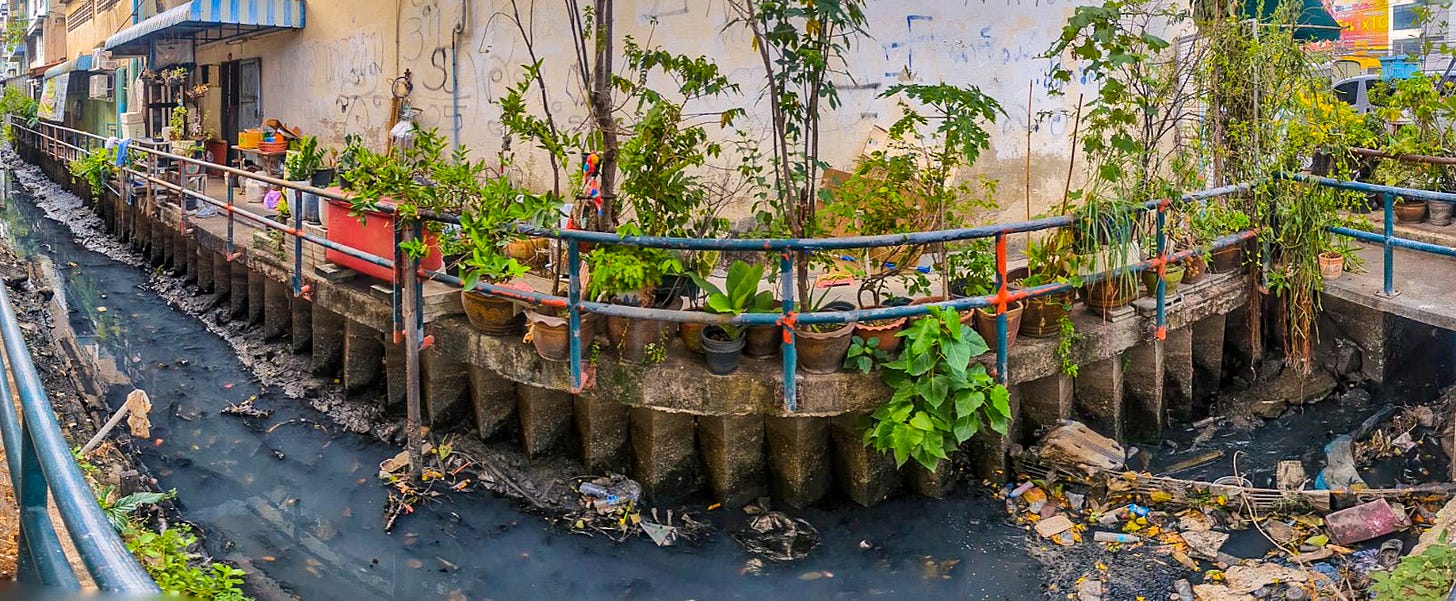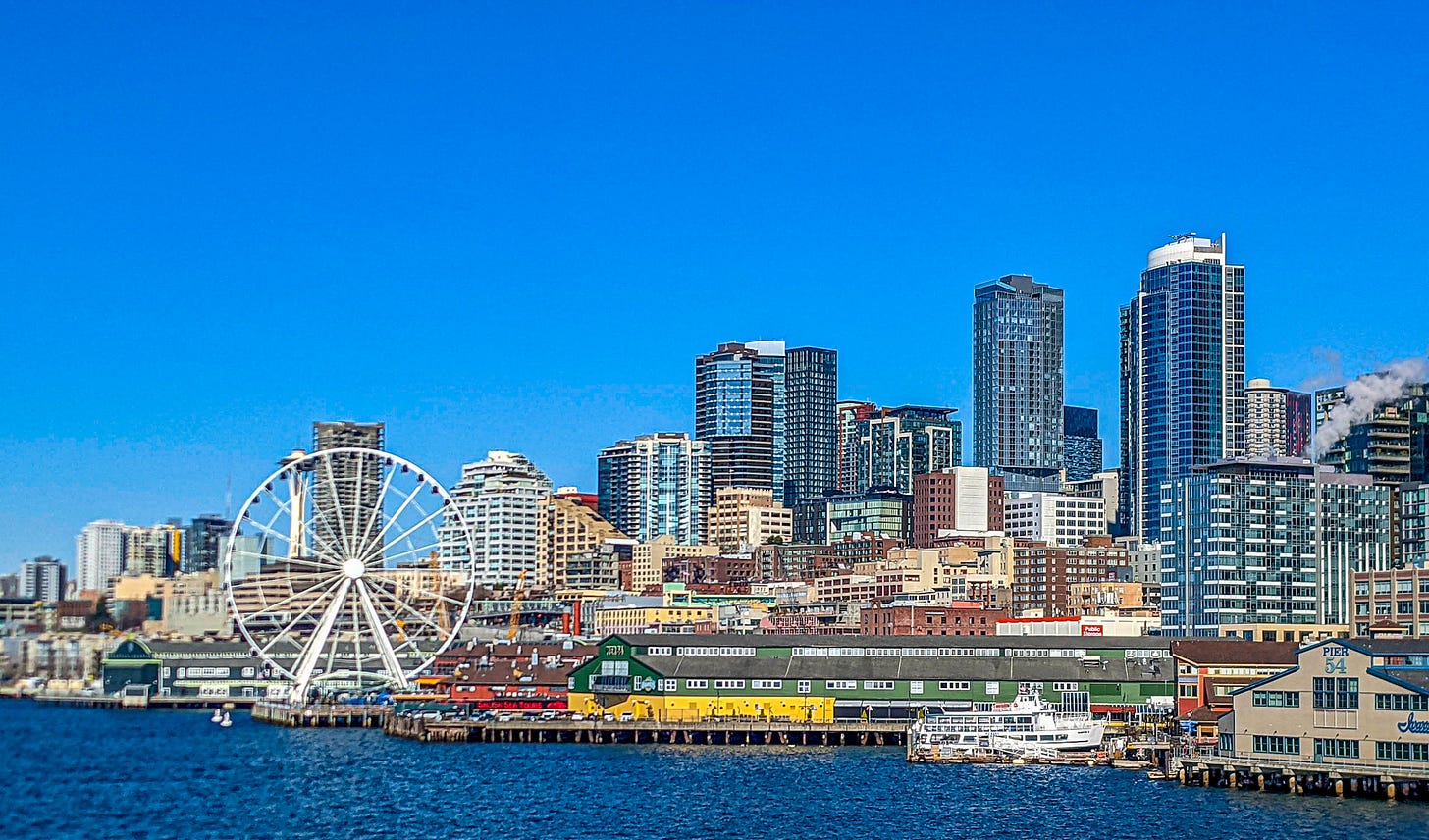Has Tourism Been Good or Bad for the World?
We have the definitive answer! Well, kind of.
Oh, God, not another self-serving article where Brent and Michael justify and rationalize international tourism and local gentrification by wealthy foreigners!
A couple of days ago, we offered our deep dive into San Miguel de Allende, Mexico — and how we think that, all things considered, the boom in tourism has mostly been a good thing for the locals there.
But we also wanted to write about the “bigger picture” of tourism and gentrification worldwide.
And we mostly think that’s been a good thing too, right?
Hold on! We’re not going exactly where you think with this.
On one hand, for decades now, poverty has been falling dramatically all over the world — and tourism (and, yes, capitalism) is a big part of the reason why.
When it comes specifically to worldwide tourism, we think one really interesting metric is to look at similar places where one area embraced tourism and the other didn’t or couldn’t — exactly as we did with San Miguel de Allende.
For example, Thailand openly embraced mass international tourism back in the 70s, but neighboring Cambodia, which was embroiled in a brutal civil war at the same time, did not.
These days, Thailand has a vibrant and growing middle class, and poverty has fallen from 60% in the 1980s to 7% today.
In Cambodia, it’s the exact opposite.
We saw the same result in Croatia, which embraced mass tourism in the 1990s, compared to neighboring Bosnia and Herzegovina (one country with two names) embroiled in a regional and civil war in the 1990s.
These days, Croatia is economically booming, and Bosnia and Herzegovina is — you guessed it! — definitely not.
During COVID, the whole world got a side-by-side comparison of “life with tourism” and “life without tourism.” In Cambodia, which was forced to shut down its finally-stirring tourism industry, things got so bad that many locals had to survive by eating insects.
And in Thailand, mental health plummeted dramatically — in part because of the pandemic, but also because so many folks lost their tourism-related livelihoods.
But our perspective on the benefits of tourism to local communities is less informed by studies and statistics and more by our personal experiences living in all these different places.
When we lived in Croatia, we asked a twentysomething local if he planned on moving west like so many other young people we’d met in Central and Eastern Europe. He laughed and said, “Why would I do that? Life is great here! I make more money [working in tourism] than my dad ever did, and I don’t work nearly as hard. Yes, housing has become crazy-expensive, so I still live with my parents. But my dad lived with his parents too.”
Meanwhile, when we lived in Sarajevo, Bosnia and Herzegovina, we met another young man who was desperate to leave for Western Europe — but since (unlike Croatia) Bosnia and Herzegovina isn’t a member of the EU, his options were very limited.
“What are you doing in my shithole country anyway?” he asked us about his homeland — the exact opposite take of the guy in Croatia.
And then there was an experience we had in Fethiye, Turkey, when Brent was paging through a 20-year-old guidebook about the area, and it warned how the nearby ancient ruins were swamped with little local kids pleading to be your “guide” and then asking for money in return.
But we’d recently visited all those ruins and hadn’t seen any little kids begging for money. On the contrary, we’d seen buses full of little kids in new tennis shoes exploring the ruins with their teachers, learning about their own ancient history on school field trips.
And yes, this was 100% due to the local economy, which was booming in large part due to international tourism. As with Thailand and Croatia, Fethiye now has a vibrant and growing middle class.
Croatia, Thailand, and Turkey all still have many problems — and some new problems that are directly caused by mass tourism.
But we think it’s important not to romanticize the past and its more “authentic” lifestyles. The fact is, poor non-Westerners want the comforts of the modern world too — running water, hot showers, flushing toilets, safe water to drink, plentiful and varied food, and easy access to information and the media.
Outside of the fictional comic book land of Wakanda, participating in the modern world economy is the only real way to get these things. For poorer countries, mass tourism is a good way to get fast results — especially compared to most of the alternatives, which usually involve heavy industries that are far worse for both the environment and local workers.
And yet! This is the part of the article where we explore the other side of the issue.
The phenomenon of mass tourism results in very real problems, not the least of which is the environmental impact.
On one hand, it’s great that travel is now available to the world’s middle class (or at least the middle class of wealthier countries). In the past, travel for leisure was exclusively the domain of the ultra-wealthy.
But all this moving about comes at great cost to the environment. If we hope to prevent the worst effects of climate change, we either need to develop and employ greener technologies — or stay put.
One of the other things COVID showed the world was that when tourism stops, local ecosystems dramatically improve.
Apart from environmental issues, overtourism is very real. At some point, there are so many tourists that it fundamentally changes the character of the place they visit, usually making it less enjoyable.
It also impacts the locals’ relationship with their own communities. In Fethiye, Turkey, a local man told us, when discussing tourism, “In a way, we have pride that we’re a city now, not just a little village. But at the same time, the nature and beaches no longer feel like they’re ours.”
Things have gotten so bad in Amsterdam, the Netherlands, that the city recently sponsored an advertising campaign telling certain “undesirable” tourists to “Stay Away” — specifically, young men looking to come to the town to “party.”
Meanwhile, Brent grew up near Seattle, and we both lived in the city from 1989 onward; we saw firsthand the city’s insane growth over the last three decades — including an explosion in tourism.
And sure, maybe our feelings are partly or even mostly nostalgia, but when we finally left Seattle to travel the world at the end of 2017, it was an easy choice. Most of the things we loved about the area had disappeared in a wave of soul-crushing congestion and a ridiculously high cost of living (though, in fairness, part of the reason we’re now able to travel the way we do is the crazy amount of money we made in Seattle real estate over the thirty years we lived there).
All this said, when it comes to most of these problems, it’s not necessarily the responsibility of tourists to solve them; it’s the responsibility of the local people and their governments. After all, tourists usually come only because they’re invited — in the form of tourist amenities, changes in government policies, and sometimes literal advertising campaigns.
One of the big ironies of Amsterdam’s current problem with overtourism — and their recent campaign telling people to “Stay Away” — is that it is at least partly the result of an earlier advertising campaign in 2012. In the wake of the Great Recession of 2007 to 2009, tourism had dipped precipitously, and that campaign pleaded with tourists to come to the city.
That earlier campaign worked too well.
Likewise, Southern Europe is also dealing with the consequences of serious overtourism. Four of those countries — Portugal, Spain, Italy, and Greece — are experiencing a backlash against all the expats and immigrants from wealthier countries, especially Britain and the U.S., currently gentrifying their coastal cities.
But as with Amsterdam, the influx of foreigners directly results from earlier actions by those four countries. In the wake of the Great Recession, the economies of those four countries were in especially dire straits, so they liberalized their immigration laws, specifically encouraging wealthy folks to immigrate there.
And it worked! The economies of those four countries are strong again, especially compared to Northern Europe, and gentrification and tourism are a big part of the reason why.
Alas, it worked too well, which is why we’re now seeing all four countries tighten their immigration laws, and also why Europe’s current backlash against tourists is especially strong in those Southern countries.
Who says governments never get anything done, amirite?
Anyway, in a very real way, these backlashes — in Amsterdam and Southern Europe — are the system working.
Prices are rising too, and, frankly, the whole experience of visiting these places is becoming degraded, which will also stabilize demand.
Incidentally, we think it’s ridiculous when people claim tourism is “just another form of colonialism.” Practically speaking, it seems to us to usually be the exact opposite: giving local people more control over their lives, at least within the world order that currently exists.
But the fact is, colonialism did exist — and still exists in a way, in the form of wealthier countries exerting undue influence over poorer ones. In less developed countries, that can mean vested or corrupt financial interests forcing local people to endure conditions and humiliations that they wouldn’t otherwise choose.
So what’s the answer? Has tourism been good or bad for the world?
On one hand, we think it’s indisputable that tourism has resulted in many good things. We prefer to live in a world where the Thai people aren’t suicidal for a lack of tourist dollars, Turkish kids don’t have to beg for pennies, and Cambodians don’t have to survive by eating insects.
Also, did we mention how travel is absolutely awesome, and that it’s incredible that more people can do it now, not just the ultra-rich? Travel opens the mind, enriches the spirit, and creates important bonds between seemingly different individuals and cultures.
In fact, countries with welcoming borders and intertwined trade are much less likely to go to war with each other. Duh.
And yet! Here’s that “and yet” again.
Tourism has also degraded the planet and local ecosystems, and sometimes changed local communities for the worse.
In short, in solving some of the world’s most pressing problems, we’ve created other problems — including at least one, climate change, that is an existential threat to humankind’s survival.
In other words, tourism has been good and bad for the world. It’s complicated!
Just like, er, virtually everything that humanity has ever done.
But when it comes to tourism, what does the world do now — especially its privileged, wealthier residents?
We don’t think the answer is to stop traveling. This would bring about the return of too much of the soul-crushing poverty we’ve seen firsthand.
At the same time, we need to solve the new problems that tourism has created. How do we do that?
You’ve heard us say it all before: while traveling, be mindful of your impact; minimize your carbon footprint; and as much as humanly possible, empower the locals and patronize local businesses.
Also, press your own government to finally take climate change seriously!
Basically, try hard not to be a selfish jerk.
But just because we’ve said all this before doesn’t mean it isn’t true.
See our companion piece: Have Tourism and Gentrification Been Good or Bad for San Miguel de Allende, Mexico?
Brent Hartinger is a screenwriter and author. Check out my new newsletter about my books and movies at BrentHartinger.com.
Michael Jensen is a novelist and editor. For a newsletter with more of my photos, visit me at www.MichaelJensen.com.












It’s so hard to say something about tourism in general. For each country the economic and environmental effects have been different. And over-tourism is a real problem.
But the reason why I still promote traveling is my belief that it indeed promotes understanding and tolerance. If we don’t visit one another, we have such a limited experience of life.
Great article with plenty of food for thought. I have not traveled as much as you but I agree there are a lot of places in Europe I will avoid in the summer now due to the intense heat, crowds and inflated prices. I went to Malaga city in February and it was lovely. Quite warm, no crowds or major queues (apart from the Picasso museum), and a pleasurable city to explore. But come to Killarney in summertime and it is swamped with tourists. And this what our local authorities and Government want.